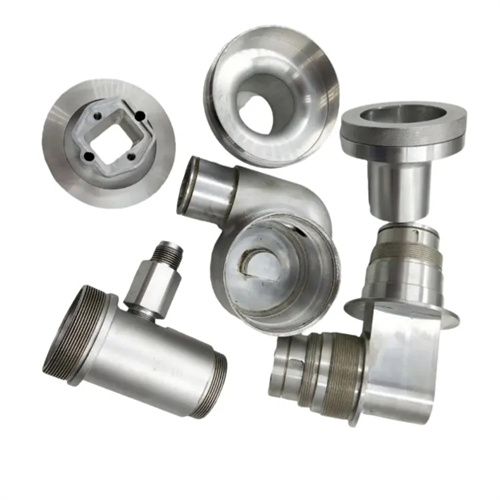Double row cylindrical roller bearings
Double-row cylindrical roller bearings are rolling bearings with high load capacity and radial rigidity. Their structure features two parallel raceways on the inner or outer ring, with rollers arranged in double rows. They can simultaneously withstand heavy radial loads and certain axial loads, and are widely used in large machinery such as machine tool spindles, rolling mills, and cranes. Compared to single-row cylindrical roller bearings, the double-row structure increases their load capacity by approximately 50%-80%. The increased number of rollers also significantly enhances the bearing’s rigidity and resistance to deformation. Test data from a heavy machinery plant shows that under the same operating conditions, double-row cylindrical roller bearings have a service life 1.5-2 times that of single-row bearings, and are particularly stable under shock loads.

The inner ring machining process for double-row cylindrical roller bearings requires ensuring the precision and consistency of both raceways. The inner ring is typically manufactured from high-carbon chromium bearing steel (GCr15SiMn) and undergoes a series of processes, including forging, annealing, rough turning, heat treatment (quenching and tempering), finish turning, and grinding. The rough turning stage involves machining the inner bore, end faces, and raceway blank to ensure uniform grinding allowances. After heat treatment, finish turning is performed to correct heat treatment distortion and lay the foundation for the grinding process. Machining the dual raceways is crucial, ensuring parallelism, coaxiality, and dimensional consistency. Parallelism error should be controlled within 0.01mm; otherwise, uneven force will be applied to the rollers, impacting bearing life. A bearing manufacturer uses a dedicated dual-spindle lathe to machine the dual inner ring raceways. By synchronously controlling the feed of the two cutting tools, the dimensional difference between the two raceways is kept within 0.005mm, significantly improving the bearing’s load uniformity.

The machining of the outer ring of a double-row cylindrical roller bearing requires a balance between raceway accuracy and installation compatibility. The outer ring structure is relatively complex, and some models incorporate ribs or flanges to limit axial displacement. During machining, the outer diameter, end face, and raceway are first rough-turned, using the inner bore of the blank for positioning, to remove most of the machining allowance. The inner raceway is then semi-finished, using the outer diameter for positioning, to ensure raceway-outline coaxiality. Finally, finish turning and grinding are performed to achieve a raceway surface roughness of less than Ra 0.4μm. For outer rings with flanges, the perpendicularity between the flange end face and the raceway must be controlled to within 0.005mm/100mm to ensure axial positioning accuracy during bearing installation. The outer rings of double-row cylindrical roller bearings produced by a wind turbine equipment supplier are machined using a CNC lathe’s powered turret for multiple steps, achieving a stable perpendicularity error of less than 0.003mm on the flange end face, meeting the high-precision installation requirements of wind turbine main shafts.

The machining of the rollers and cage of double-row cylindrical roller bearings significantly impacts bearing performance. High-precision cylindrical rollers are used, with diameter tolerances controlled to G2, cylindricity no greater than 0.001mm, and surface roughness reaching Ra0.1μm. This is achieved through centerless grinding and superfinishing. Crowning is applied to both end faces of the rollers to reduce edge stress concentration. The cage separates and guides the rollers. Double-row cages are typically made of brass or phenolic resin. Brass cages are stamped or turned, while phenolic resin cages are injection molded. The cage pocket size must match the roller diameter. Excessive clearance can easily cause roller skew, while too little clearance increases frictional heat generation. A precision bearing manufacturer has reduced the bearing’s temperature rise by 15% and improved its rotational accuracy by one grade by optimizing the cage pocket ovality and guide surface accuracy.

Assembly and testing of double-row cylindrical roller bearings are the final steps to ensure their performance. During assembly, the appropriate inner and outer ring combination must be selected based on the bearing’s clearance requirements. Radial clearance is determined by measuring the difference between the inner and outer ring outer diameters. The radial clearance for standard-grade bearings is generally 0.01-0.05mm, while that for precision-grade bearings is controlled at 0.005-0.02mm. Cleanliness must be maintained during assembly to prevent impurities from entering the bearing interior and affecting the rolling performance of the rollers. Testing items include radial clearance (using a clearance meter), rotational accuracy (using a roundness tester), vibration noise (using a vibration meter), and temperature rise (using a temperature sensor). Statistics from a bearing testing center indicate that strict assembly and testing procedures can reduce the early failure rate of double-row cylindrical roller bearings to below 0.5%. As industrial equipment develops towards larger sizes and higher precision, the demand for double-row cylindrical roller bearings continues to grow, and their processing technology is also developing towards intelligence and automation. By using digital twin technology to simulate the operating status of bearings, optimize structural design and processing parameters, and further improve the performance and reliability of bearings.
